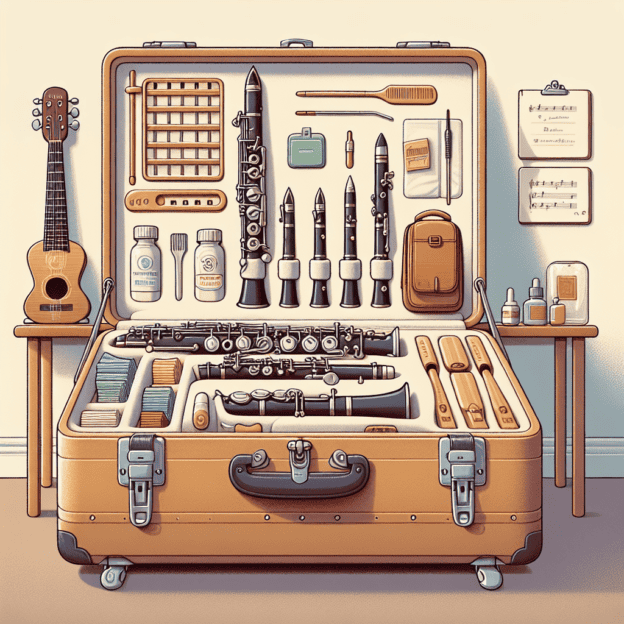Introduction
Organizing your clarinet case is a crucial aspect of playing that's often overlooked. A well-organized case can significantly improve your playing experience, save time, and protect your instrument and gear.
Picture this scenario: You're in a rush to a rehearsal or performance, and suddenly you can't locate your clarinet mouthpiece. Panic sets in as you frantically search through your case. To avoid such stressful situations, proper clarinet case organization is essential. Let's explore some practical tips to help you stay organized and prepared.
Assessing Your Case
Start by examining your current case. Does it have specialized compartments, or is it just a basic box? Some high-end cases come with padded spaces for mouthpieces, reeds, and even sheet music. If your case lacks these features, don't worry! You can easily add small organizers or pouches to hold your essentials. A simple zippered pouch for items like reeds, swabs, and cork grease can make a significant difference in your organization.
Layout Strategies
When arranging your case, think strategically. Your mouthpiece and reeds should have designated safe spots. This approach reduces the risk of scratching your mouthpiece or warping your reeds. By giving each item its proper place, you ensure everything stays secure and ready for use.
| Item | Recommended Storage |
|---|---|
| Mouthpiece | Padded compartment or protective pouch |
| Reeds | Reed case or humidity-controlled container |
| Ligature | Separate compartment or small box |
| Cleaning supplies | Zippered pouch or dedicated compartment |
Protecting Your Instrument
Your clarinet is a valuable investment, so it deserves special care. Consider adding soft padding where the clarinet rests in the case. This extra protection helps prevent dents and scratches, ensuring your instrument stays in excellent condition for years to come.
Benefits of Organization
A well-organized clarinet case offers numerous advantages. It allows you to quickly locate what you need, enabling you to focus on your practice or performance. Knowing that all your essential tools are in place gives you peace of mind and contributes to a smoother playing experience.
Spare Parts and Tools
Many clarinetists use additional items like tweezers or extra ligatures. Keep these tools handy to avoid frustration when dealing with tuning or sound issues before a performance. Dedicate a small section in your case for these essential repair tools. Consider using a compact toolbox or case to keep these items neatly organized.
Managing Accessories
Every accessory in your case serves a purpose. From clarinet swabs for cleaning to music stand lights for evening performances, make sure each item has its place. Easy access to all your accessories will enhance your overall music experience, making your practice sessions and performances more efficient and enjoyable.
Maintenance Routine
After each playing session, take a moment to tidy up your case. Develop a habit of returning items to their designated spots. This practice will save you time and reduce stress in the long run. Consider creating an end-of-practice checklist to ensure you always have everything you need.
Personalizing Your Case
Add a personal touch to your case! Use stickers, color-coded labels, or photos of your favorite musicians to make your case uniquely yours. These personal elements can inspire creativity every time you open your case, setting the stage for an enjoyable music session.
Conclusion
These tips should help you achieve excellent clarinet case organization. Remember, finding the perfect setup may take some trial and error. Once you find what works best for you, you'll notice that playing your clarinet becomes a more enjoyable and smooth experience. Happy playing!







